I’m seeing the rise in AI-generated “professional” headshots. Many of my LinkedIn connections have recently updated their profile pictures, and I suspect that most of the headshots were created with generative artificial intelligence.
I personally believe that professionals should update their personal branding materials every 2-3 years as it’s important to make sure that your headshot looks like you now and not you ten years ago. People need to be able to spot you in a coffee shop. My headshot was a couple of years old, and let’s face it, the pandemic lockdowns made me look like I aged a decade! It was time to refresh my pic and show the world the before-and-after effects of homeschooling my children and Netflix binging during lockdown!
I tested out four different AI headshot generators: Tryiton, Secta, Aragon.AI and HeadshotPro. Though dozens of headshot generators are available, these three seem to be the most popular on social media. I also hired a professional photographer to take my photos as well. I live in the Research Triangle in North Carolina and have a long-standing relationship with Giovanna Torreieri of Diora Media. I wanted to answer one simple question: Are AI-generated headshots just as good as professional photos?
How do AI-generated headshots work?
Users can upload 7 to 40 photos of themselves to a website or app. After uploading, an AI model will analyze these photos to learn your facial features and generate a model. This process can take anywhere from 60 minutes to 48 hours. It’s important that these tools receive clear images of your face—no obstructions and a natural appearance without artificial light, filters, or anything that might reduce image quality, like photos of photos.
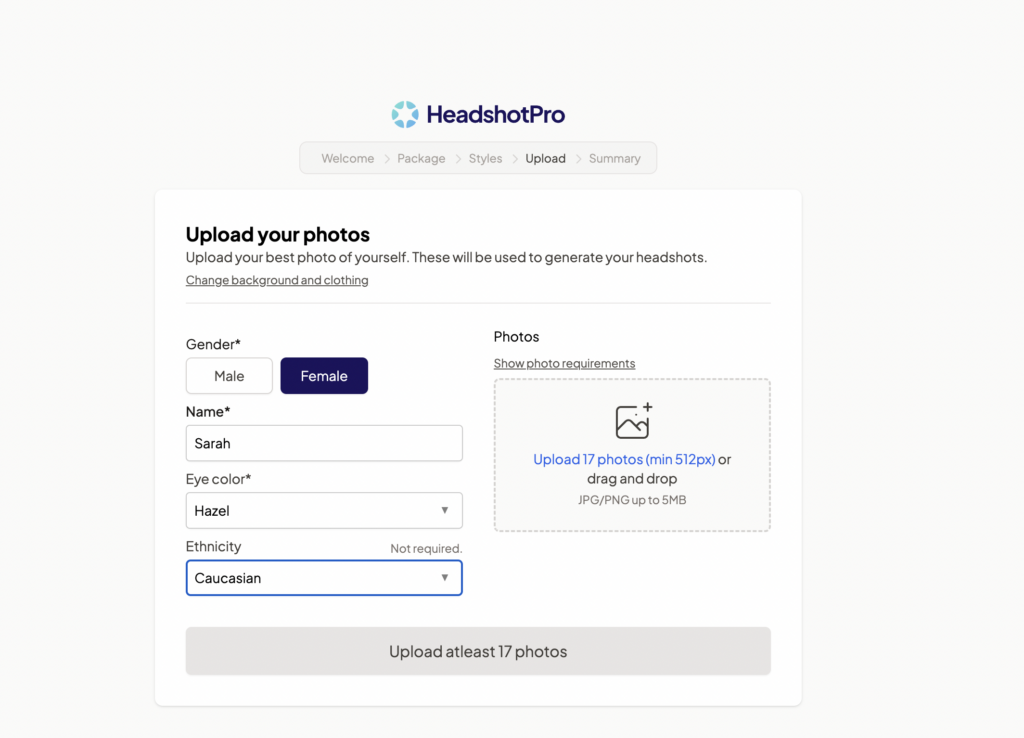
Review of TryItOn.Ai
My first experience with AI-generated images was with TryItOn. I have a trendy colleague who keeps me informed of the latest TikTok trends. Back in March 2023, everyone on TikTok was talking about TryItOn. Being naturally curious, I, of course, had to “try” it myself (pun intended).
TryItOn had me upload 10 pictures of myself. For $17, they generated 100 different headshots.
Here’s a sampling of the pictures generated of me. I am showing you the best of the best. They nailed the hair and my skin color, but my facial features are not accurate. Additionally, the photos were all “off” in different ways. Some gave me extra teeth, some gave me baby fingers, and –as you can see in photo #3– some gave me weird frames of myself in the background of the headshot.
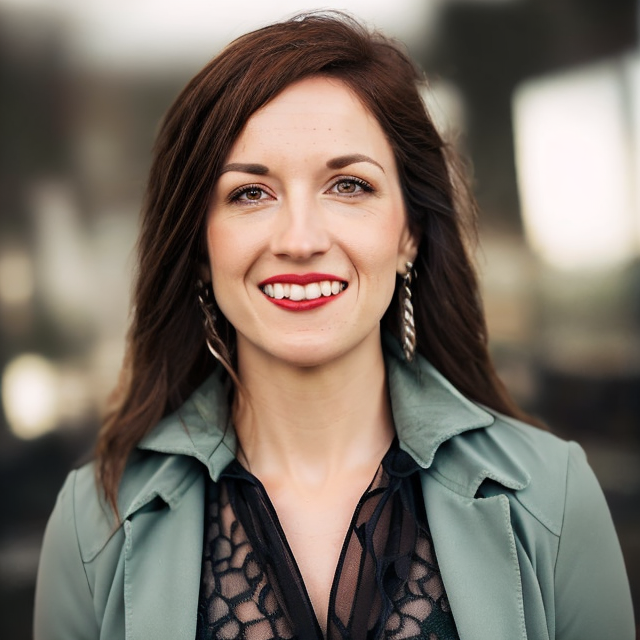


TryItOn does have a clear Terms of Service Agreement page written in easy-to-understand language. One of my biggest concerns with AI photos has been “who owns the rights to these images?” According to TryItOn’s TOS page, all rights to the photos generated using our Services belong to the user.

Bottomline: Perhaps this website has come a long way since March 2023, but based on my experience, I would not recommend this website.
Curious to learn more about TryItOn, I did a full review on YouTube.
Review of Aragon.AI
When I searched “best AI headshot generator” on Google, the top result I found was Aragon.ai. It’s likely that they invested significantly to secure that spot, and if others are seeing similar results, they’re probably getting substantial site traffic, making it worth a closer look.
Aragon.Ai–like many other AI headshot websites– makes you acknowledge and agree to their terms of service before proceeding with their service. As with any of these sites, I recommend reading the TOS carefully.
Aragon.AI had me upload a minimum of 6 photos into their AI-learning model. This is fewer than any other site that I tested.
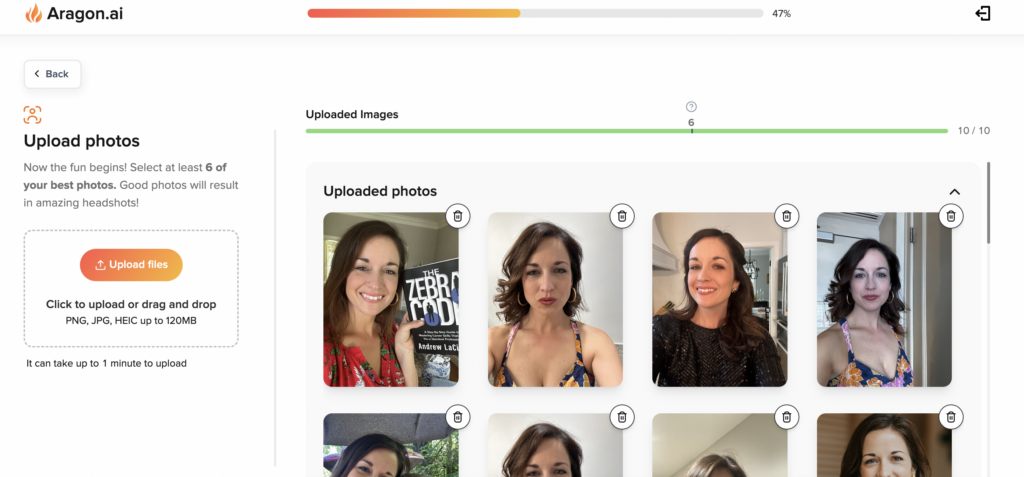
Once I uploaded my photos, they asked me a series of questions, including gender, age, eye color, and race.
I then had the option to choose my package. Aragon.AI is the most expensive of all of the headshot generators that I reviewed for this article. They are only giving 20 options for $35.
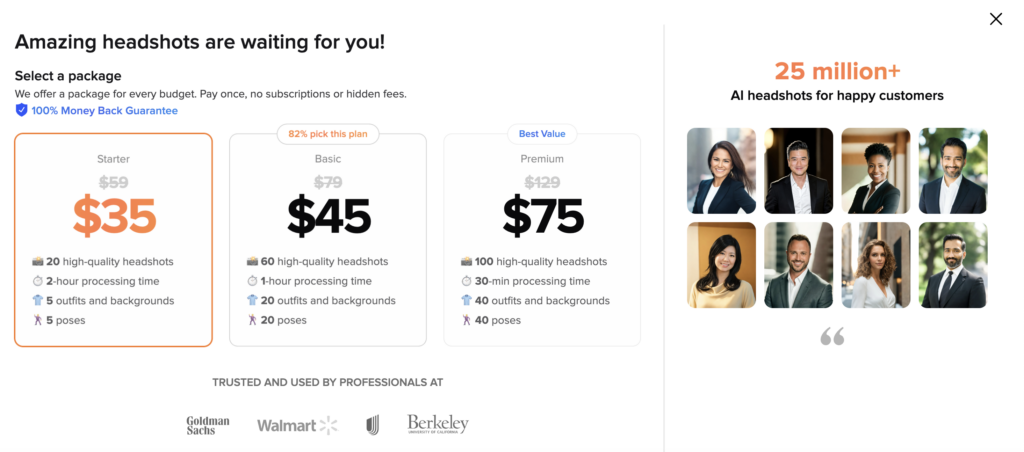
About an hour after I uploaded my images, Aragon.AI sent me an email notifying me that my images were ready for review. They sent several hundred pictures for me to review. I selected the best of the best below. While these pictures are great, I don’t think they could pass as me.
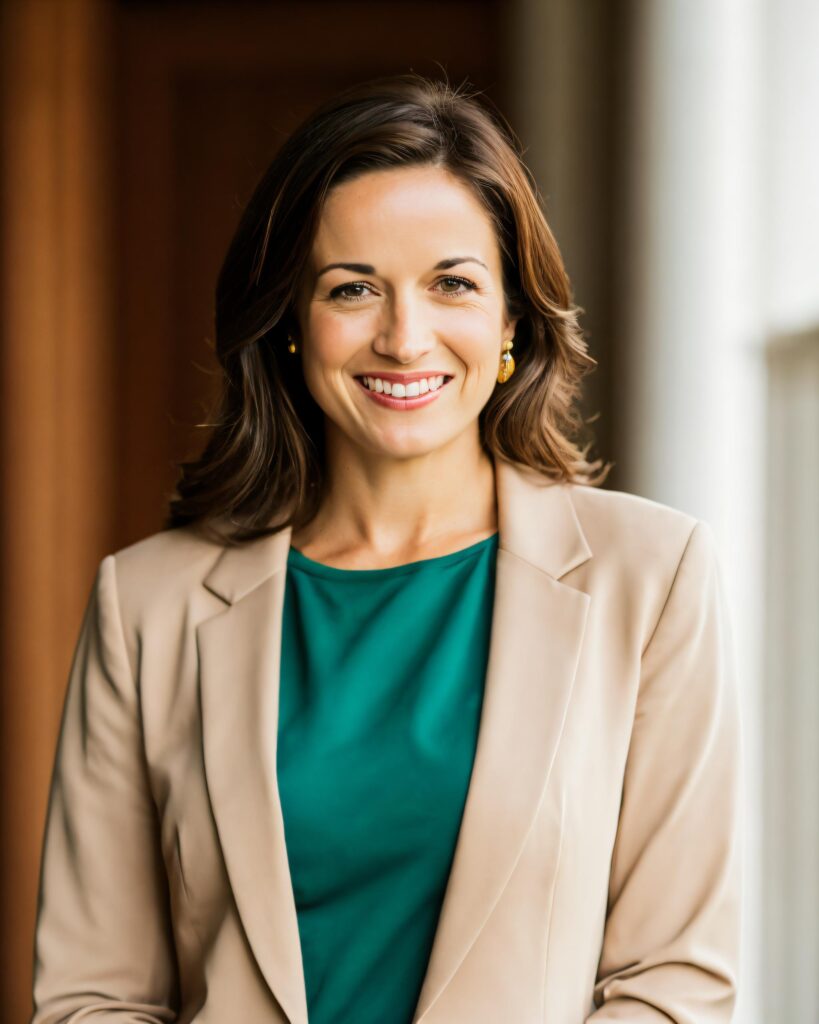
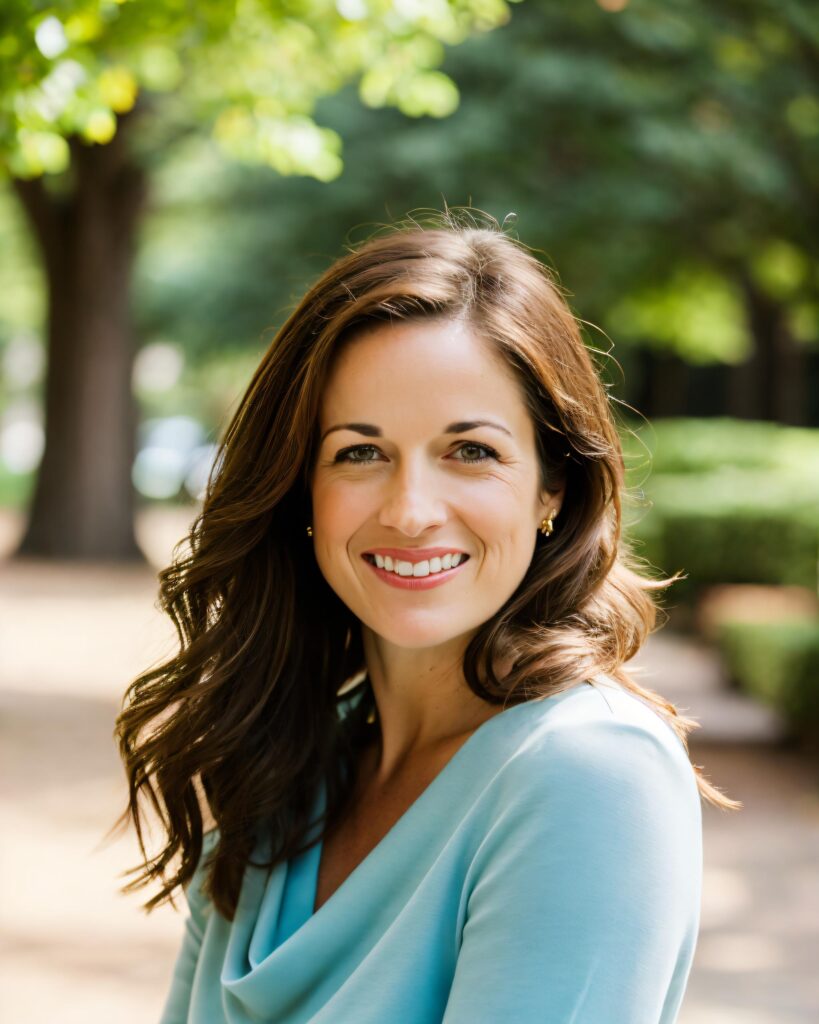
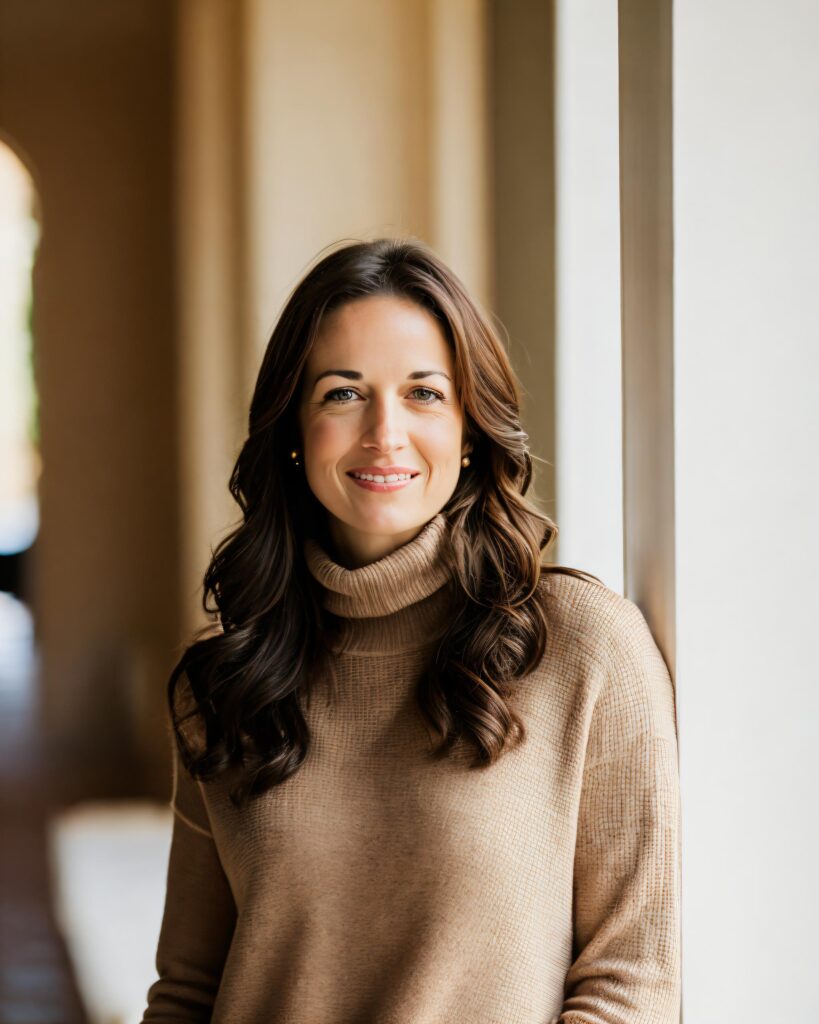
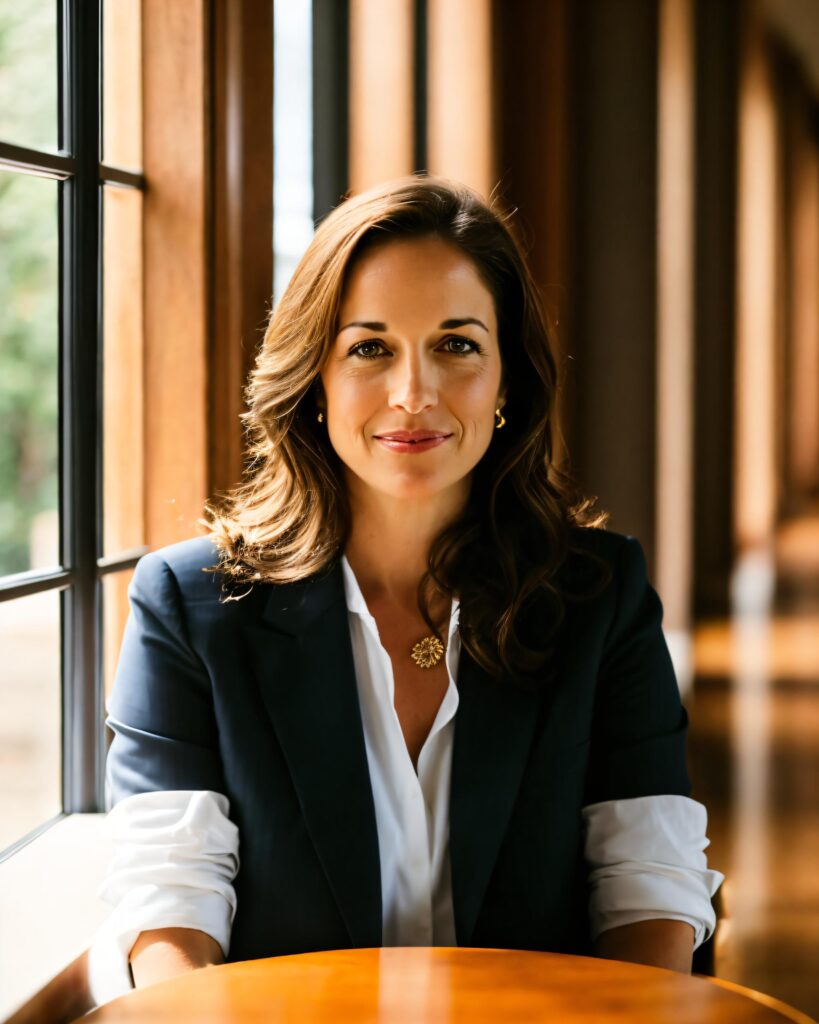
Review of Headshot Pro
Headshot Pro markets itself as the #1 AI-generated headshot company and claims to have generated over 7 million headshots.
Their website was pretty straightforward: $29 for 120 headshots. They let you choose the background and clothing style for your photos.
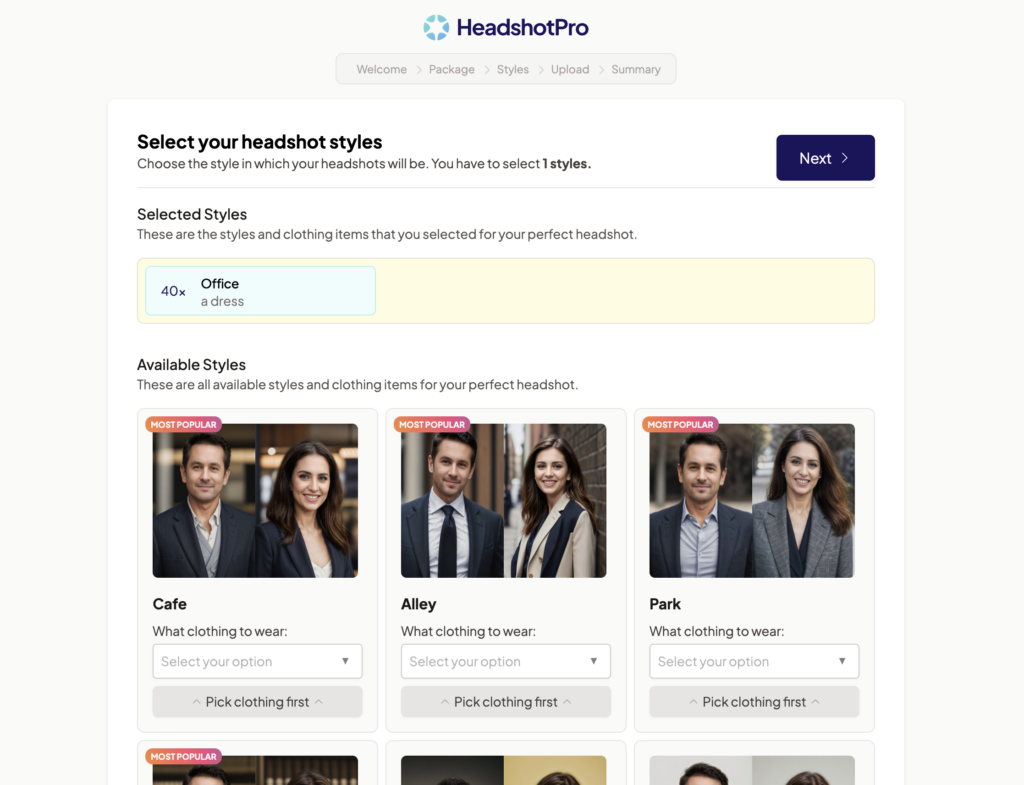
When I wrote the original version of this article in 2023, I gave HeadshotPro a bad review. I did not like the Terms of Service Agreement that you had to accept in order to receive your photos. The agreement in 2023 stated that Headshot Pro owned all generations of your photo. I did not feel comfortable with this statement and chose to forgo my photos.
Since publishing the original version of the article, HeadshotPro revised its terms. In fact, the founder of HeadshotPro, Danny Postma, sent me an email letting me know that they took my review to heart and clarified the terms. (Ps. I never used the free code he offered. If it’s still valid, one of you readers should claim it!)
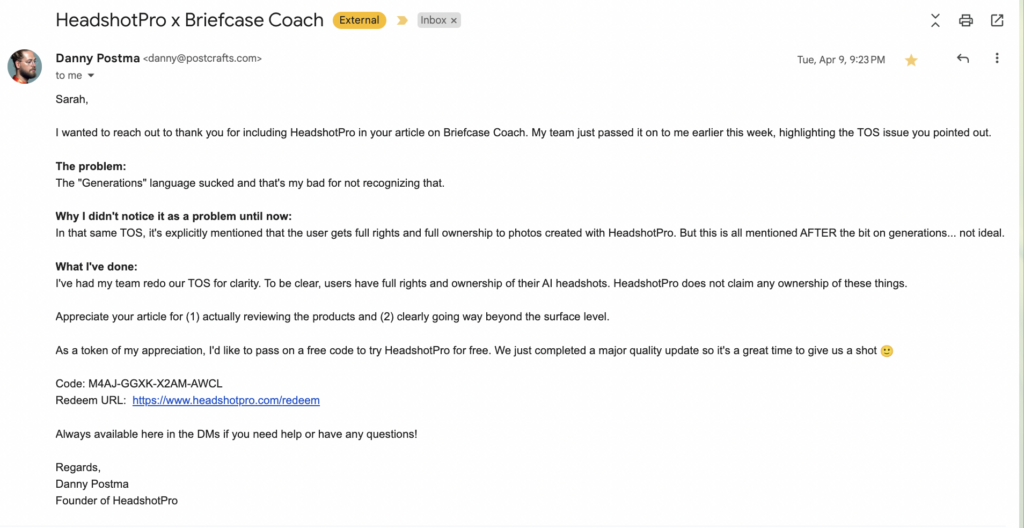
In this updated article, I wanted to give the platform a second chance. This time, HeadshotPro had me upload 15 pictures. In reality, I had to upload 23 photos– the site didn’t accept all of the photos that I tried to use for a variety of reasons.
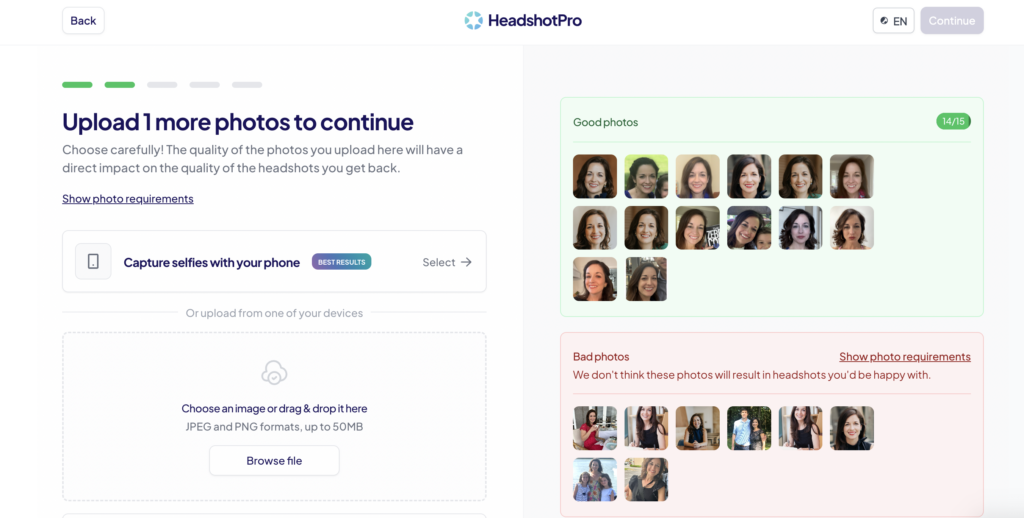
Once I finished uploading all of my photos so that HeadshotPro could use them to analyze and learn my facial features and create their AI model, the platform gave me the option to choose my style preference. I selected “office” in a navy blazer with a light blue shirt. I like that HeadshotPro gave me style options. One of my issues with TryitOn is that they put my AI model in clothes I would never wear in real life.
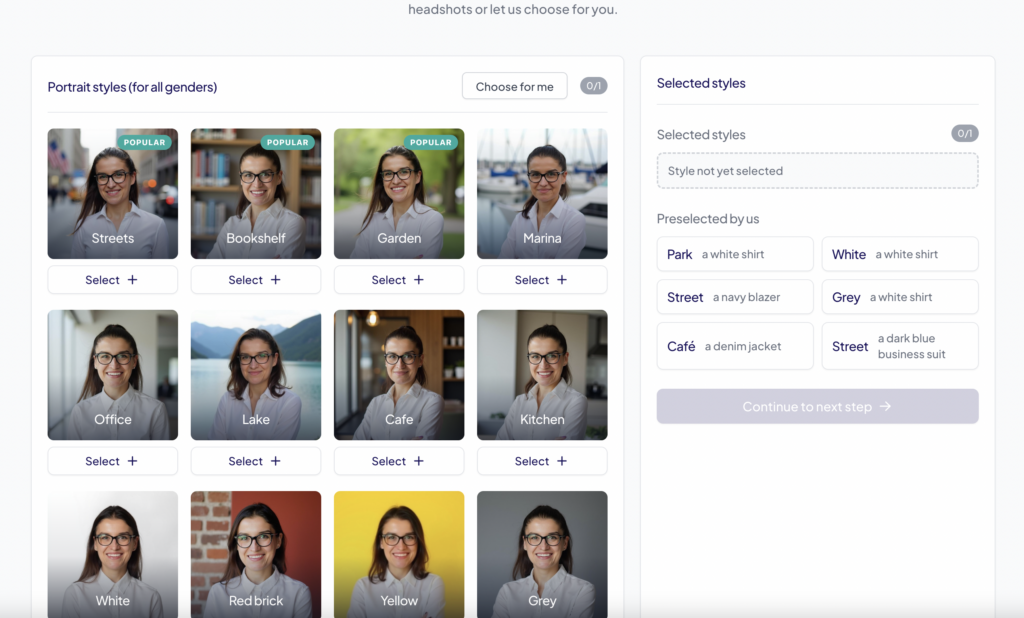
The website was having server issues and it took longer than normal to get the headshots. After 6 hours, I was able to preview Beta images.
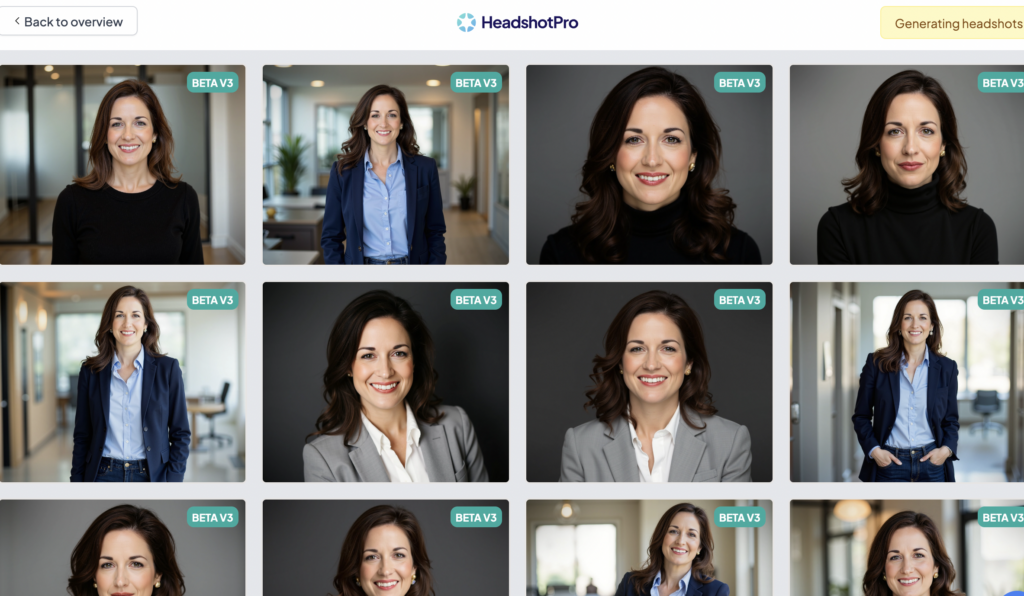
The website gave me several dozen Beta images to choose from. Because the site was having server issues, it took an additional hour for me to be able to download any of the files. In my opinion, these photos look close but like a heavily botoxed version of me.

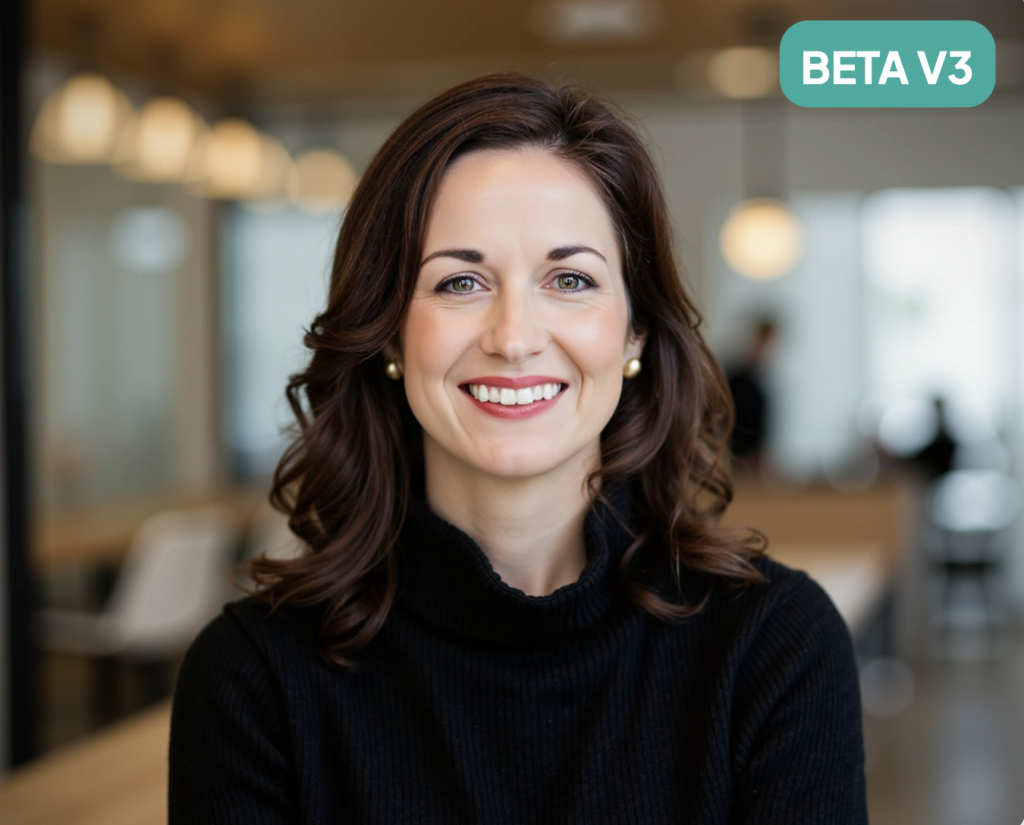
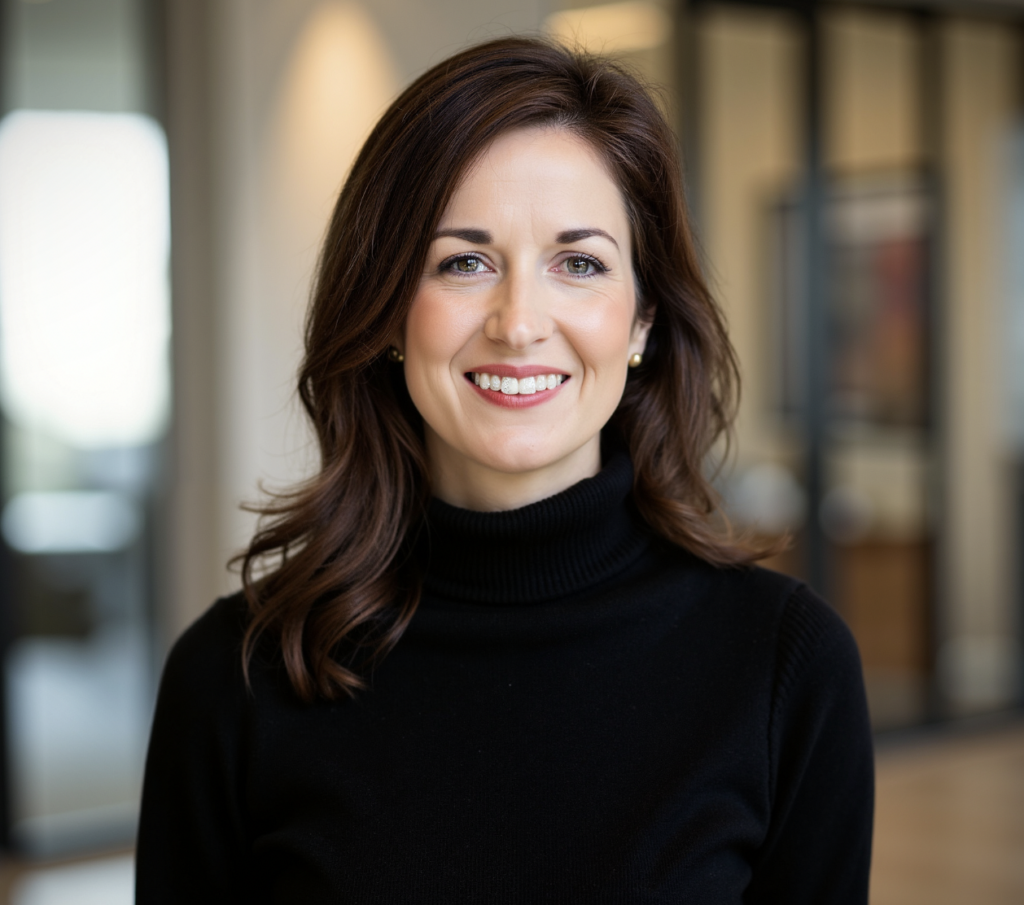
Review of Secta.Ai
Secta had me upload 25 (!) photos of myself. I had to work hard to find that many selfies. For $49, they delivered over 200 headshots.
I tested Secta out in 2023 and declared them my AI-headshot “headshot of choice.” My own sister thought the middle image was taken by a professional photographer and didn’t realize it was AI-generated.



I offered the opportunity to have Secta-generated photos to my team at the Briefcase Coach. The general consensus from everyone on my team who participated is that these photos look like “your television news anchor doppelganger.”
I found Secta’s Terms of Service agreement easy to read and understand. Their terms give you ownership of original content and AI-generated content.

Secta released many new upgrades and a new model in 2024. I was given a gallery from their new model. As you can see from the pictures below, they are brand-lifestyle photos featuring me in an office setting. In my opinion, these look very professional. I could see myself using some of these images on my website or in social media posts in the future.
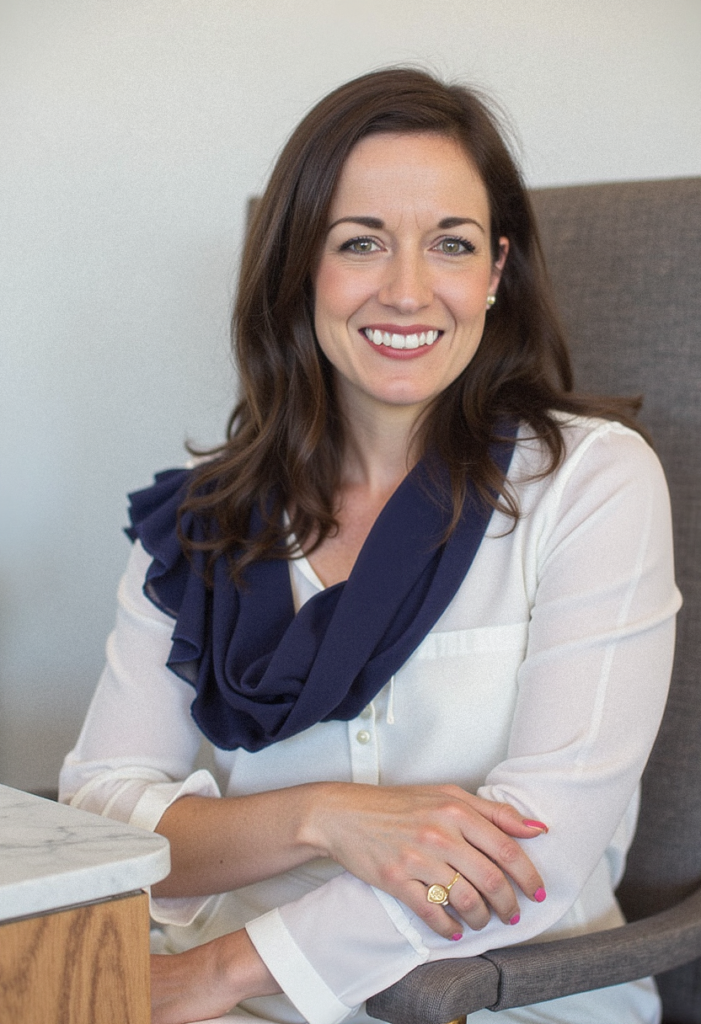


While most of the 50 photos I received from Secta’s latest model were excellent, a few stood out with noticeable issues, particularly in the proportions of hands and neck. Below are the three that turned out the worst.

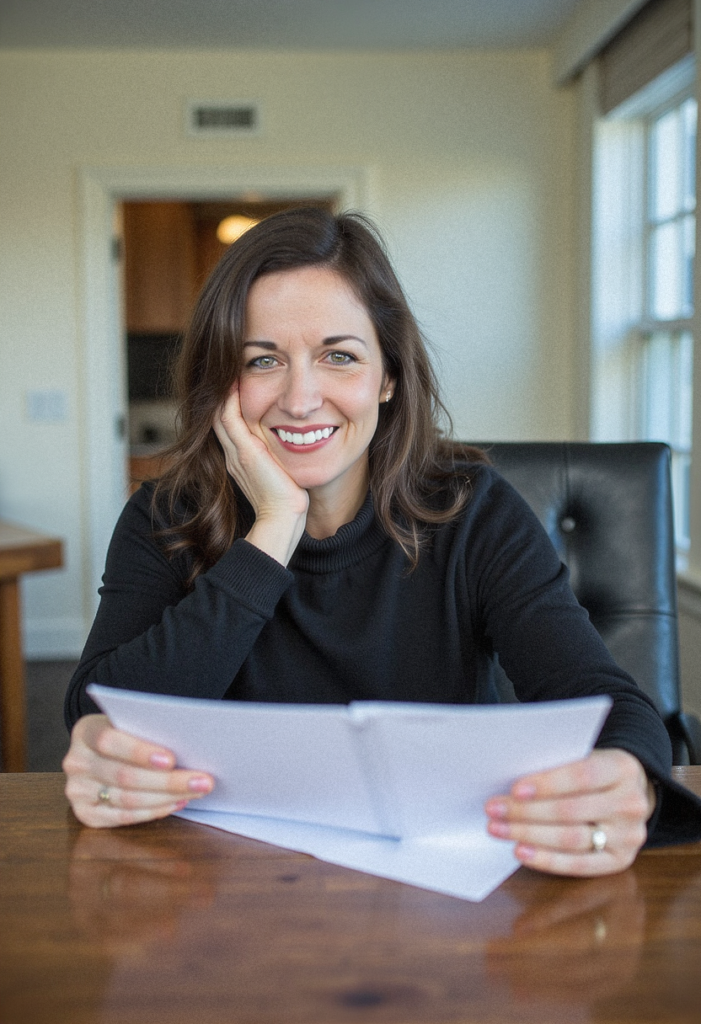
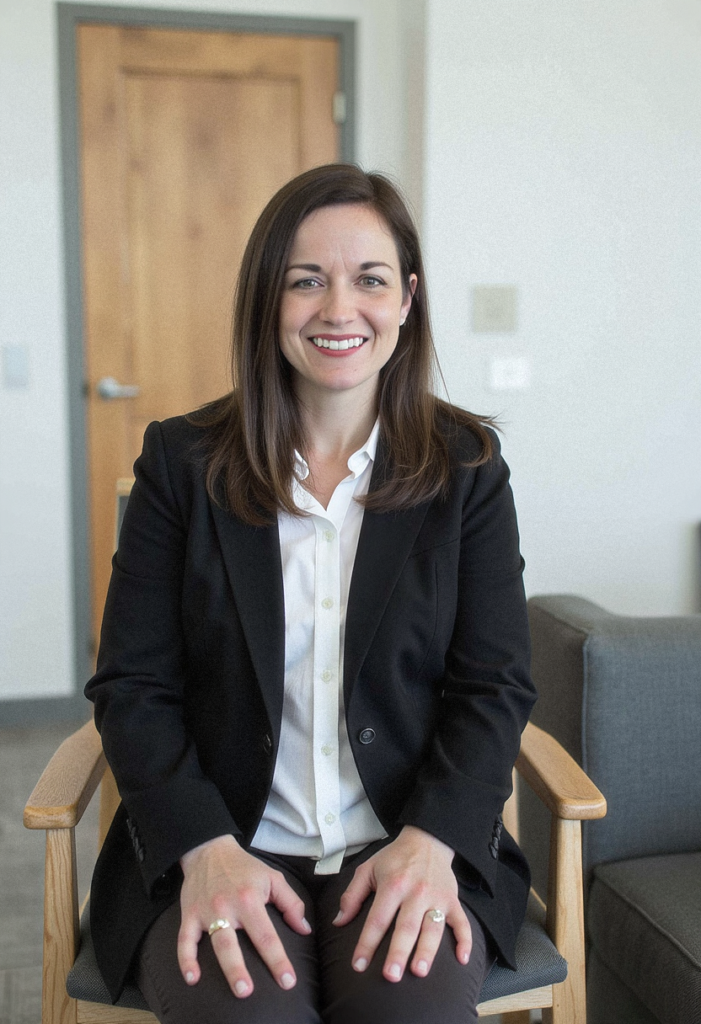
Bottomline: Most job seekers do not have the time or budget to hire a professional photographer for brand photos. Secta is a great option for professional-looking headshots and is “better than a selfie.”
Review of Professional Photographer
Giovanna is one of the top photographers in the Raleigh, NC area. When I hired her services, I was looking for more than “just” headshots and a branding partner. I wanted someone I trusted who could help me get the exact shot representing my personal brand. Before our photoshoot, we discussed my vision, including colors, location, and desired outcome. She is pretty familiar with my client base and could make thoughtful suggestions.
I paid her $500 for a one-hour photo shoot, editing, and the rights to the photos.
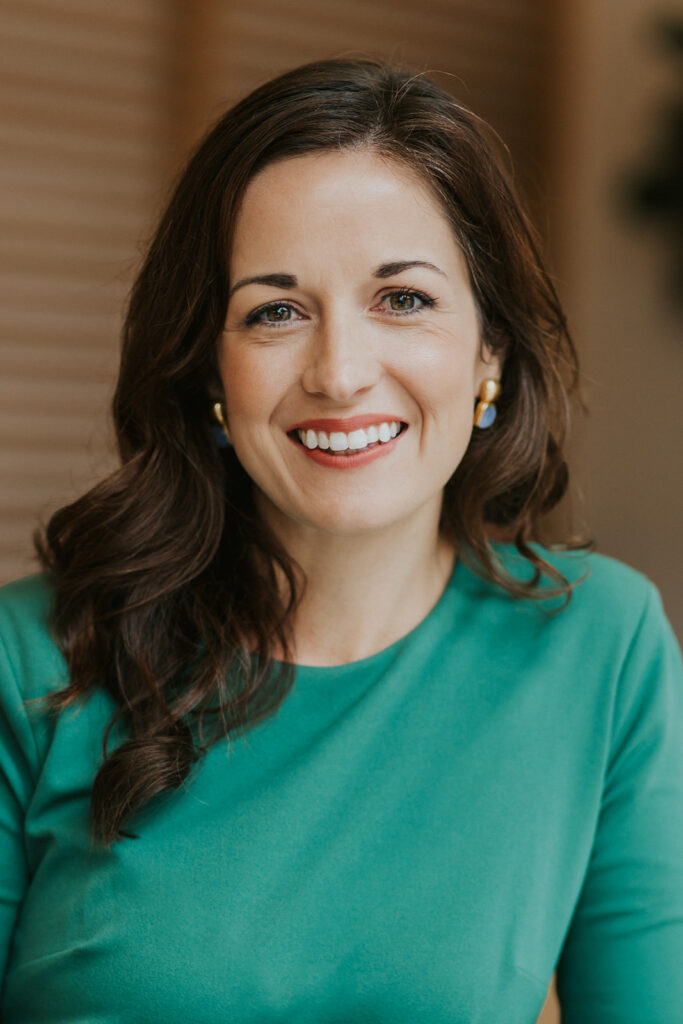
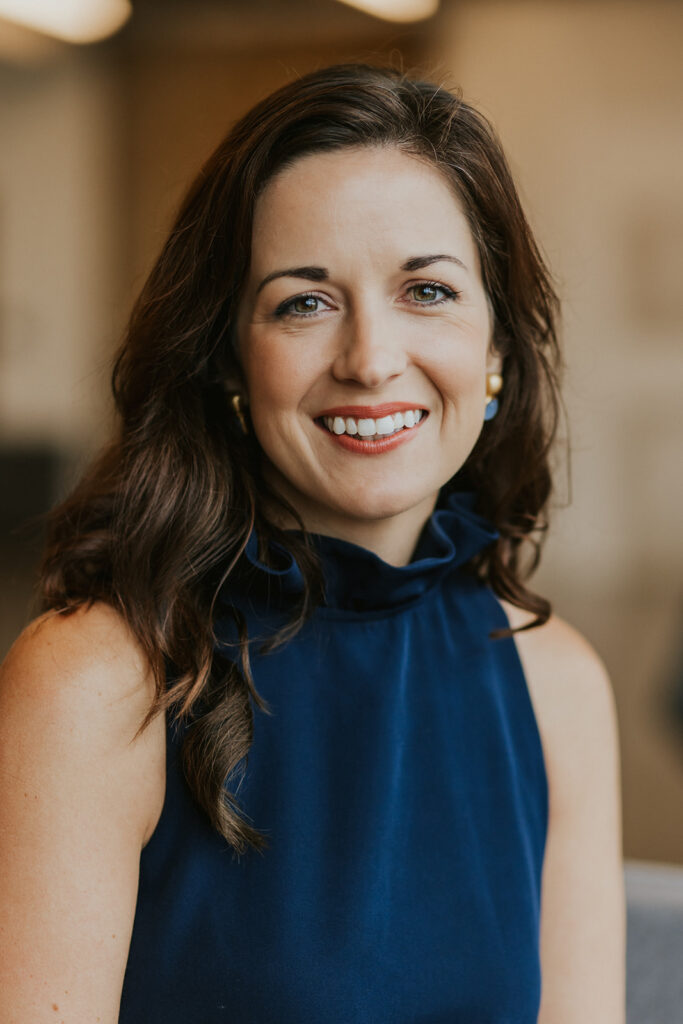
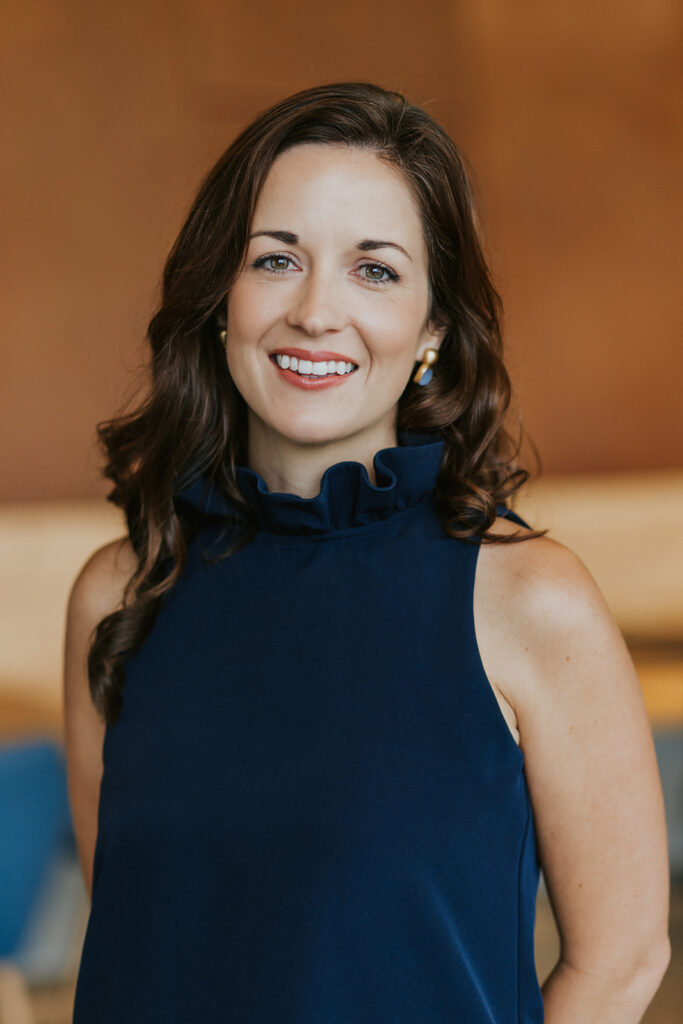
While this was the most expensive option, I view headshots as one of the most important investments in your personal brand. My headshot is my online brand logo. When people see my content on platforms like LinkedIn, they also see my headshot photo. My photo needs to build trust and authority and demonstrate likability.
Can People Tell the Difference Between AI Headshots and “Real” Photos?
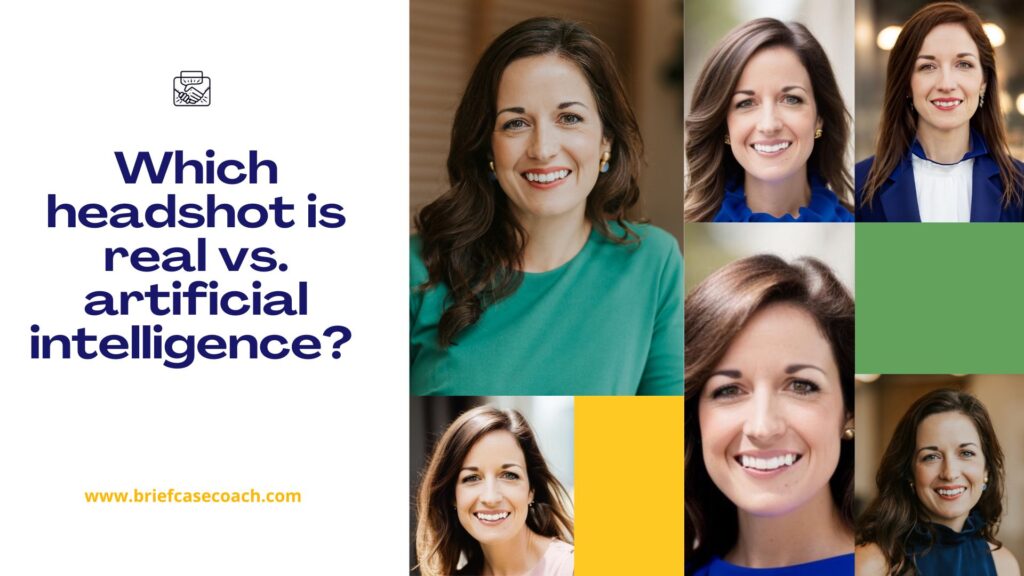
I recently shared the results of my photo sessions with my 950K+ followers, with the prompt, “Two of these are real. The rest are fake. Which ones did my photographer take?”
Many longtime friends, colleagues, and former clients weighed in on the guessing game. While most of my close friends were able to accurately select the headshots taken by Giovanna, my professional photographer, most of the responses were incorrect. In fact, a friend with whom I had lunch the week prior guessed (with great enthusiasm) the wrong answer.
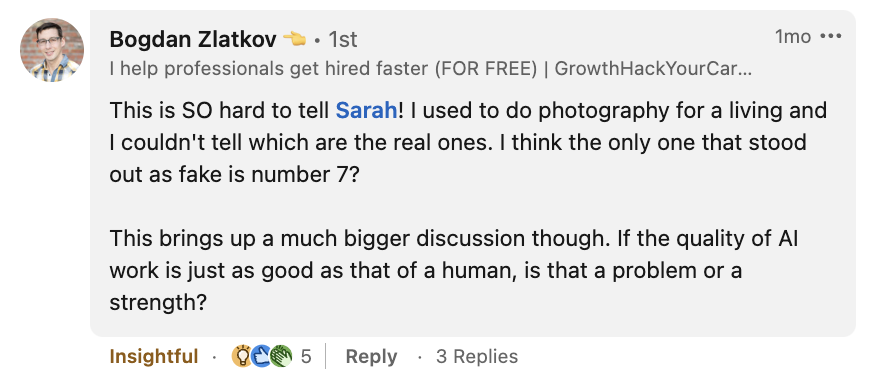
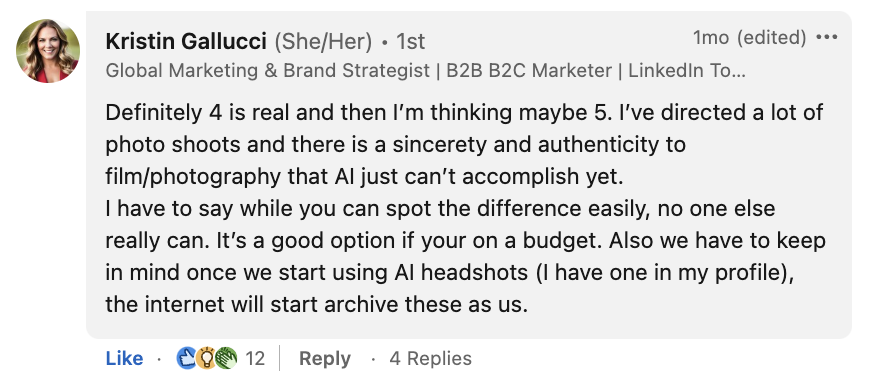
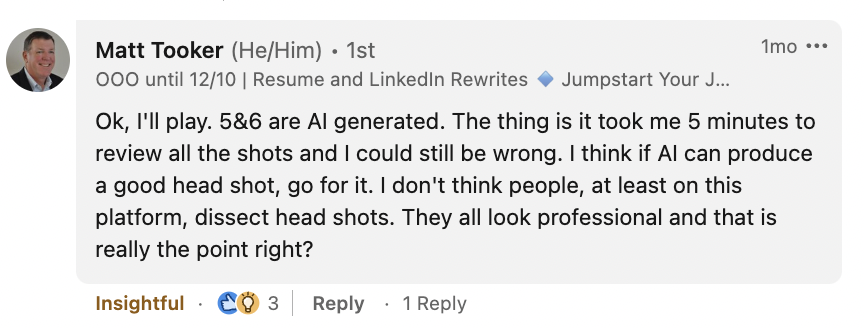
Which AI Headshot Generator Did My LinkedIn Audience Like the Best?
I also conducted a blind poll on LinkedIn, selecting the best headshot from each of the four AI headshot generators. For Secta, I used their original headshot, not the new lifestyle branding images from their latest model. The poll is still live at the time of publishing, but so far, the headshots from Secta (photo 1) and HeadshotPro (photo 3) are running neck and neck. You can view the poll results here.
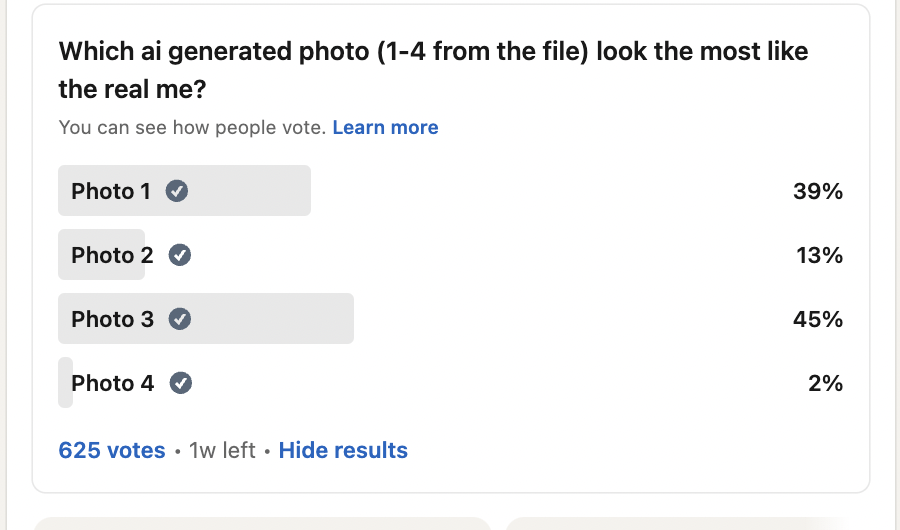
The Pros of Using AI Headshots
AI-generated headshots present a range of benefits for individuals and businesses. I recently offered to pay for my team to have “professional headshots” created through Secta. I manage a fully virtual and distributed team. Scheduling a headshot photographer in different locations felt daunting (and expensive). AI-generated headshots notably slash the time needed to create professional headshots compared to traditional photography sessions, ensuring a swift image generation turnaround.
Theresa White, founder of Career Bloom, agrees with my feelings on these headshots, “As long as I’d recognize the person when I meet them in real life or via Zoom, I’m good with AI headshots. Not everyone can afford a professional photographer, and AI levels the playing field for those who don’t want to invest in it.” Accessibility is another major plus, as AI headshot creation only requires a device and access to online AI tools, making it accessible to a wider audience, particularly individuals or small businesses with limited resources. Furthermore, these tools facilitate effortless experimentation, enabling users to explore diverse styles, looks, and settings before settling on the ideal headshot. Erin Riska, a recruiter, perceives them as “better than a selfie.”
The Cons of Using AI Headshots
The world of AI-generated headshots brings about some important considerations worth exploring. One significant worry revolves around their potential lack of authenticity, a concern voiced by many individuals. In a recent poll gathering 1,600 responses, 38% of participants said they perceive AI-generated headshots as “soulless.”
DUMB!!! why take the honest human aspect out of something so simple. Why are we so rushed to live in a false environment? Why are we so rushed to have computers take over?
Clay, Crane Operator from Texas
This sentiment was echoed by Ryan, a mechanical engineer from Chicago, who expressed deep concern: “Using an AI-generated headshot is mind-numbingly horrible. At what point does the corporate world become so fake that we all just create ‘AI-generated versions’ of ourselves?” These concerns highlight the challenge of maintaining genuine human connection and authenticity in an increasingly digital landscape.
I interviewed several of the top headshot photographers a few years ago when writing a “headshot best practices” article. I had a conversation with Georgia-based photographer Kate Kelava. The advice she gave when selecting a headshot was to “Select a headshot that makes someone feel like they know you just by seeing your picture. It should reflect your personality and, most importantly, show a connection. It’s the image that you look at and say, “That’s so me!” Many people feel like while AI-generated headshots look pretty darn close to the human subject, they are missing that “sparkle” and often don’t reflect the individual’s personality.
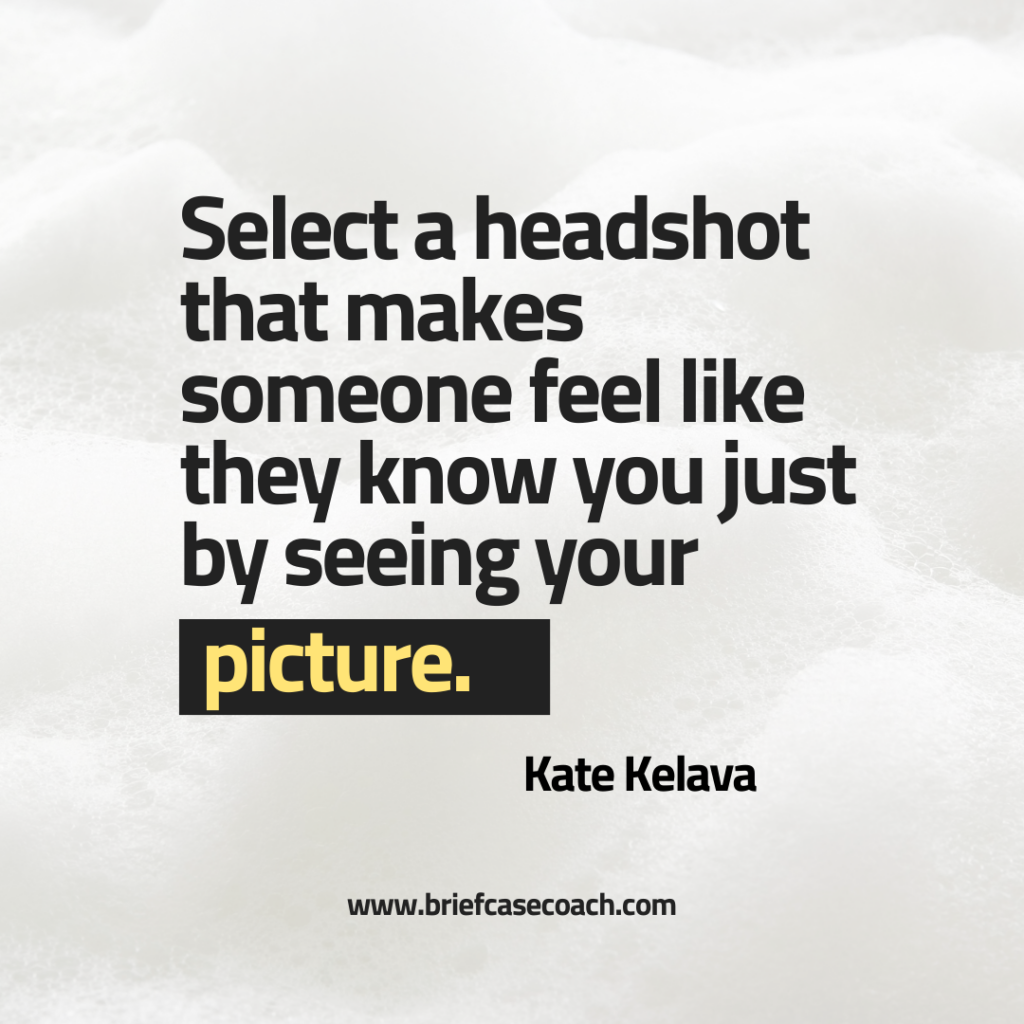
Ethical Concerns Over AI Headshots
Ethical concerns also arise regarding the creation and usage of AI-generated headshots. Questions about consent and the ethical implications of generating images without explicit permission can raise ethical dilemmas, particularly when these images are used in ways individuals may not have intended or approved.
In an interview with Today.com, Mari Galloway, an AI and cybersecurity specialist, expressed that users should still be concerned despite claims in these privacy policies.
“We don’t know what they’re going to do with that data, that information,” she says. “They don’t keep the photos and videos longer than 24 hours. But do we really know what they’re doing with that? How are they deleting it? How is the data encrypted? We don’t know those details because they don’t share that information.”
AI Headshots Limit Personalization
The extent of personalization achievable through AI-generated headshots might have limitations despite the available customization options. These images could lack the distinct touch and individuality commonly found in photographs tailored to specific preferences and personalities. Kassandra Rodriguez, a branding strategist from Dallas, recounted her experience, mentioning, “I tried multiple brands and even paid for one service that looked extremely promising, but they made me look like a different ethnicity.” Brandon McGill, a geotechnical recruiter from Idaho, echoed similar concerns, sharing his experience: “I tried this, and it turned me into an herbal essence commercial when I normally have short hair. I got a laugh out of it but couldn’t bring myself to use it.” These anecdotes underscore the challenges in achieving accurate and personalized representations through AI-generated headshots.
I did one and let me just tell you – the money I spent on the AI Headshots were WELL WORTH MY 10 minute LAUGH FEST!!! Mine turned out hysterical. I died. My kids died. We were laughing crying!
Erica Rooney, keynote speaker and author in Wake Forest, NC
Quality concerns regarding AI-generated headshots cannot be overlooked. Depending on the quality of the input images or the algorithms used, distorted features or inaccuracies in the final generated headshots might impact their overall usefulness.
Another crucial consideration revolves around the potential for misrepresentation. AI-generated headshots may not always accurately represent an individual’s true appearance. This leads to issues in scenarios where precise representation is critical, such as professional profiles or identification purposes. These concerns underline the need for careful consideration and awareness of the limitations associated with AI-generated headshots.
AI Headshots Can Amplify Bias
A Forbes article by Ariana Johnson shared some shocking stats about AI software. According to her article, the dataset the AI is trained on is limited. It lacks images of uncommon diseases and diverse skin tones. A report published in the Journal of Biometrics and Biostatistics found that Black women between 18 and 30 have the poorest facial recognition accuracy. Additionally, in an analysis of more than 5,000 AI images, Bloomberg found that images associated with higher-paying job titles featured people with lighter skin tones. Also, most professional roles were male-dominated. Victoria Turk wrote an in-depth and must-read article about how AI reduces the world to stereotypes.
Final Thoughts on AI-Generated Headshots
I have a balanced perspective on AI headshots. They make a lot of sense when you are on a budget and need a small professional photo. The latter might be the better choice for job seekers deciding between a wedding photo, an outdated Olan Mills-style headshot, or an AI-generated one.
If you are in a position where your photo will get a lot of visibility or is a digital-first impression for client-facing sales or customer service work, I would strongly consider a professional headshot taken by a photographer. A great photo can build trust with your target audience before they even have the chance to meet you in person.


One response to “Review of the Top AI Generated Headshots 2025”
This is a great breakdown of all the pros and cons Sarah! Thanks for putting this together.